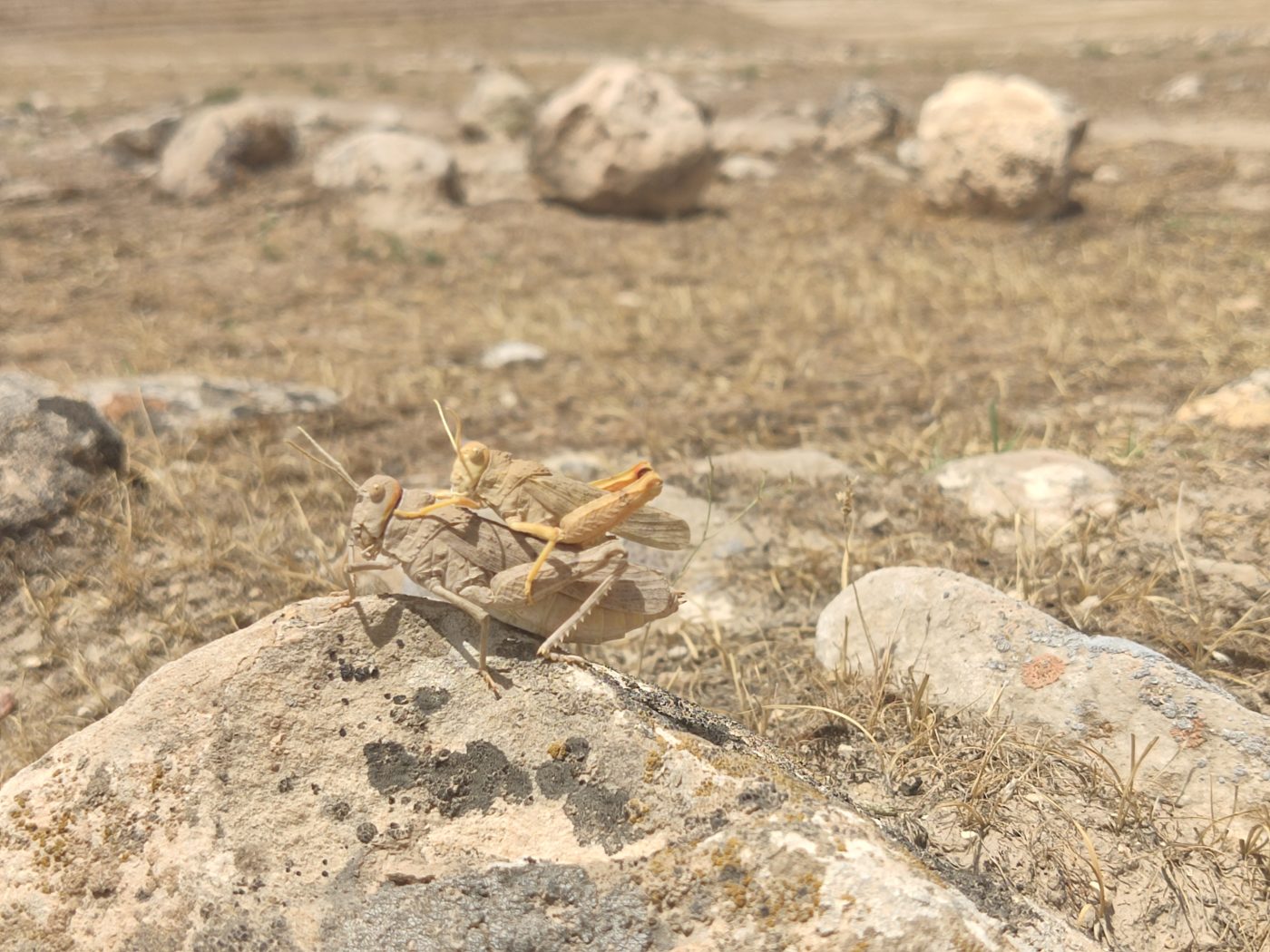For nearly 30 years, Mullah Khan Mohammad has worked his family’s land in Surkh Kotal – near the great archaeological site of the same name – in Baghlan province. Baghlan, in northern Afghanistan, is known as the country’s breadbasket due to its significant wheat production. “Since we returned [in the early 1990s, after the Soviet-Afghanistan war], we have been cultivating wheat, beans and seasonal vegetables here,” said the 45-year-old farmer proudly, as he showed The Third Pole around his farm.
But Mohammad is now facing another enemy: locusts are ravaging his harvest. “So far, about 60% of our produce has been affected by malakh [locusts]. Soon there will be nothing left,” he said dejectedly.
Mohammad is not alone, and farmers in surrounding districts shared similar woes with The Third Pole. “The locusts have destroyed more than half of our harvests this year,” said Ahmadzai, a 50-year-old farmer from Baghlan. “There isn’t even enough chaff left to feed the animals,” he added.
Warning of dangerous locust outbreak
An advisory issued by the UN’s Food and Agriculture Organization (FAO) on 10 May 2023 warned of a major outbreak after Moroccan locusts (a species of locust which is found from north Africa to western Asia) were reported from 10 of Afghanistan’s provinces. “The last two big outbreaks, 20 and 40 years ago, cost Afghanistan an estimated 8-25% of its total annual wheat production. A full outbreak this year could result in crop losses ranging from 700,000 to 1.2 million metric tonnes of wheat – up to a quarter of the total annual harvest,” Richard Trenchard, the FAO’s representative in Afghanistan, told The Third Pole in an email on 4 June 2023, repeating the text of the advisory.
Trenchard also shared data on damage caused by locusts across Afghanistan’s northern and northeastern provinces up to the first week of June. Samanghan, Baghlan and Kunduz had been the worst affected, with 6,000 hectares, 5,000 hectares and 4,500-5,000 hectares respectively damaged by locusts. Most of the land affected was pasture, but wheat, sesame, green gram, and cover crops were also impacted.

Farmers in Pul-e-Khumri walk through their fields to see where locusts have gathered on 20 May 2023 (Image: The Third Pole)
In both the advisory and in his comments to The Third Pole, Trenchard emphasised that this year’s harvest had been the best in three years – significant in a country struggling with food security. “But this [locust] outbreak threatens to destroy all the recent gains, and dramatically worsen the food insecurity situation,” he wrote.
Afghanistan has been experiencing an extreme humanitarian crisis since the government takeover by the Taliban in August 2021 due to a host of factors, including an extended drought. As a result, nearly 20 million people in the country are facing acute hunger, “including more than 6 million people on the brink of famine-like conditions”, according to UN estimates.
Read full article on The Third Pole
